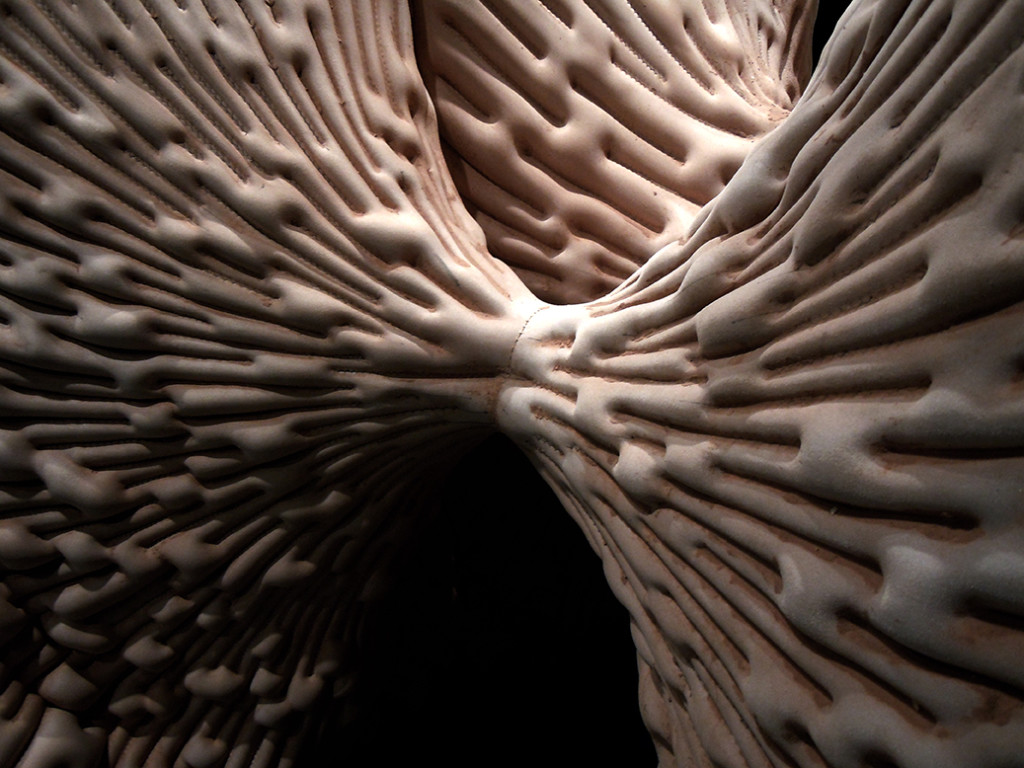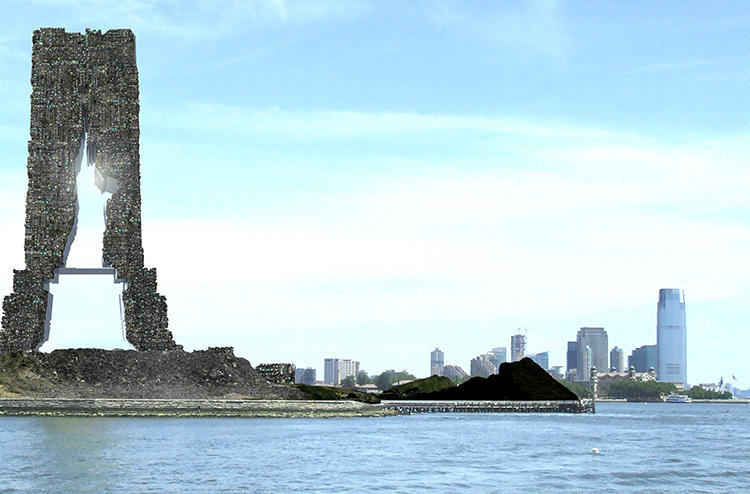The Elastic Self | Roche | the whole version!
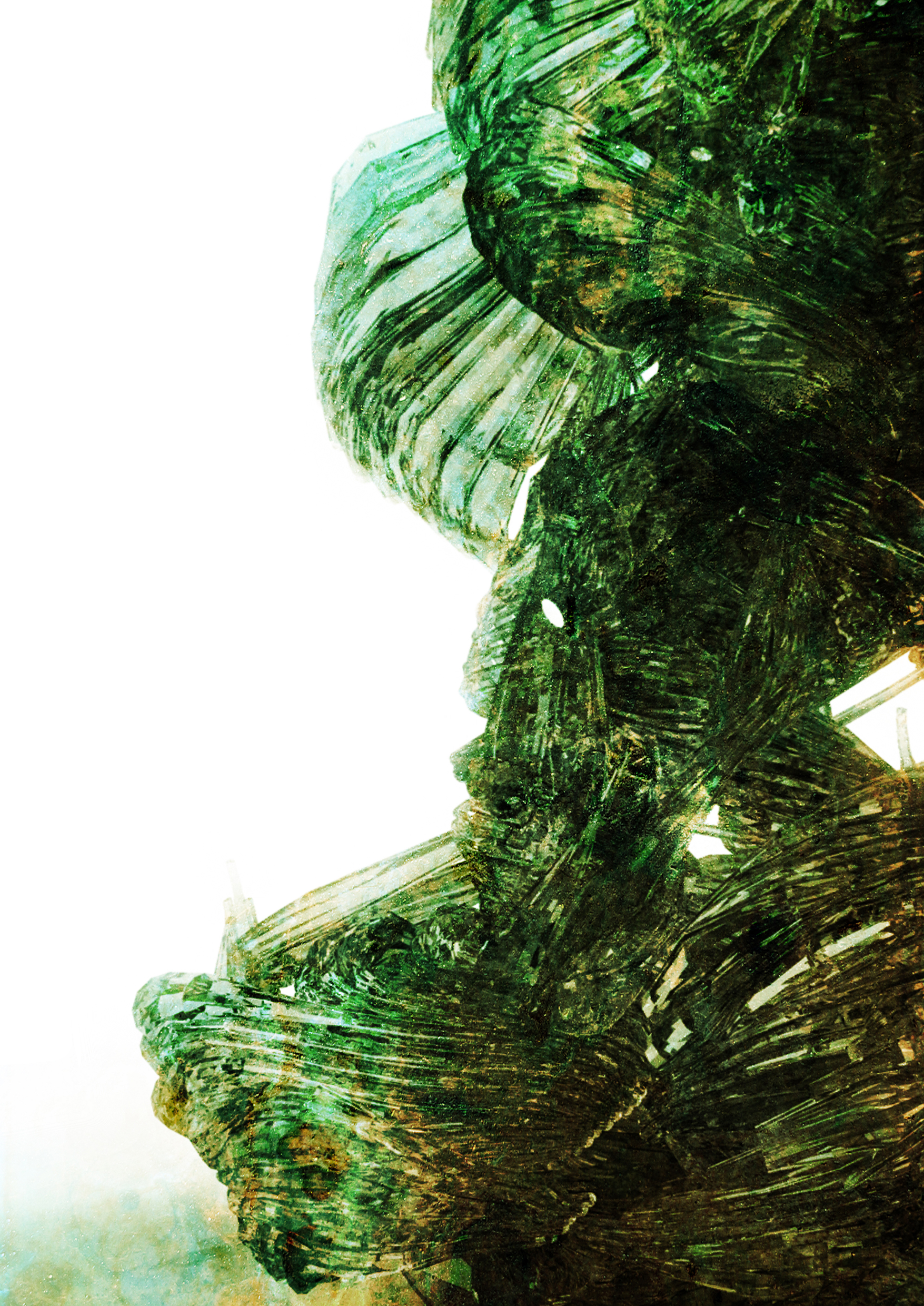
the whole version of article and interview by Federico Giacomarra with François Roche
1. Studio of teaching (n)certainties / 2008
I did not meet Roche in person, at the time of the interview was in Bangkok, we agreed to an interview by e-mail … all this took place in the span of 25 days … the editors communicate me several times that they are very happy to wait to send the interview to the press … will never happen?
FG: By the way … what is the point about expectation and reality annulment, you can ‘really talk about masochism in architecture?
FR: Before you think that this could be an intellectual and practical operation, is primarily the recognition of the slavery, the one of the architect. Manufacturing models of a city are modeled on those of a manufacturing plant, the architect becomes his vector, “the worker”, which produces the icons of capitalism without paying capital gains.The profits of his work is not for him. The failure to discuss the nature of these icons on their use, scope and political involvement, is his main reason for being. Whether it is competent or not, however affects the brain, the post-capitalist architect is not only the main ring of union of industrial and urban, but it is in parallel an elegant form of duplicity of the system, the eroticization of these false”flagship”-flagshit.
The loyalty to production without affecting production conditions in a kind of voluntary Slavery, has simultaneously generated a general impoverishment of architecture and its degradation. Professionals have in hand the academies in order to bend them to their needs: to produce an alienated labor, able to surf the modes of production and calculation, but totally brainless than any attempt to challenge these arrangements using the same method of production…
Submission to the mechanism of power and authority does not pay. There are in the strategies of opposition, conflict and indignation, the fact that the capitalistic structure,geometric and adaptive contours ectoplasm, wakes up and commits to negotiate transactional mode. But because this plasticity functions, you must first take the risk of the operation, tear, puncture, bite, in close combat tactics in strategic visibility and folds…appearance and hiding…
There is masochism not so much in it-self, but in the acceptance of the conditions that the system operates with sadism. And this is the shade of Deleuze in “cold and cruel”, the political difference between the two concepts:I pull out a power, the effective recognition of a system of domination, but with limits of contractualisation, content and manner of submission, on the other hand, the sadism, I let the system institutions assert my innocence and my virtue, enjoy my innocence and my virginity, rape and torture to alienate me… I submit to the desires, the lust of his desires.
We are here, the architects are not masochists, but the book refers to the sadism of the system, the voluntary suicide, the organization of the system itself. Under these conditions, to escape the sadistic institution, we must question the legal framework of submission , looking for Sacher-Masoch protocols, able to define mechanisms of exchange, domination, slavery, ‘eroticization of pain and transactions and it is important to qualify what is the basic substance of the contract not only… of relationship between the parts, but in terms of representation of this relationship, masochism is a show, a dramatization of human transaction, an exorcism of the hidden face, detector, the awakening, both Eros and Thanatos, the life instinct and death instinct . But the fact that this is an open contract, negotiated, the protagonist has the opportunity to introduce obstacles, conditions, limitations, and the provision of all necessary termination of this contract and modes of exchange as a result of the termination.
What is the point? He built the city as an industrial product. Manufacturing models of urban monitoring XIX (turning morphological monitoring system of prisons and psychiatric, to develop the city panoptic / surveillance and punishment, history of madness Foucault M), we would have gone to the city post-industrial, industrial object itself as the reversal of the factory space on the outside, with its chain of production, its products, its marketing … rewarded its workers poverty wages …
It is no coincidence that it is the same people, who created this city “industrial product marketing,” using the political phraseology from the barricade (’70s) to transform it into a propaganda tool, are sharing his capitalist construction and they are not innocent fascinated by the power that great strategists grant them back to their addiction.
We would be more practical if the recognition of our slavery was taken as a resilience which has become contractualisation vector of the report.
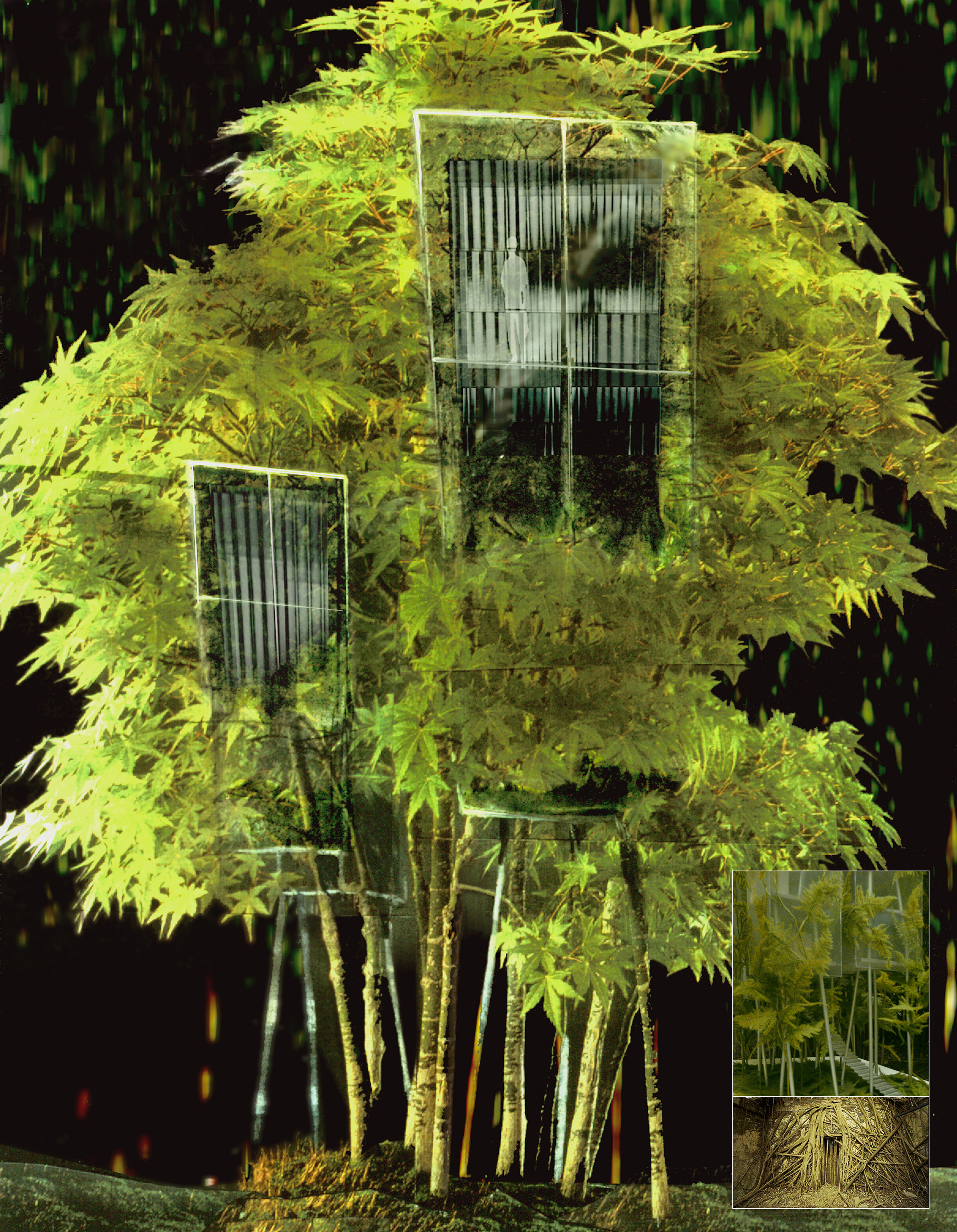
2. House in the Trees / 1993
FG: In Aqua Alta 2.0 (2000) you speak of two models of cities: the modernist Platonic one, which shows the domination of the environment, and the second an urban model of the “here and now” that sees the subject in equilibrium with its environment. This is a theme that recurs many times in your projects such as: Scrambled Flat, Thegardensofearthlydelight, Symbiosis hood. Precisely in this project the concept of symbiosis seems to want to solve the problem of masochistic model, a model in which it is true that the aim of the report is the rebirth of one of two (dominated), it is still felt a strong entropic load: everything must follow the rules in order to experience suffering and pleasure, then, in this extreme control, what appears to be losing is life itself. What do you think?
FR: The symbiosis between two elements is a matter of balance, the lichen can not survive if the fungus and the algae do not negotiate how they trade. Do not think this is quiet, it is a conflict that takes place on the line razor … masochism is not a suicide, there is this story of the frog and the scorpion: “it’s my nature to prick you in the middle of the river and descend with you into the depths of the current”.
It is the articulation of a rational co-dependency in order to play to life … has its palpitations, its vulgarities, with what it is … and that brings out burial impulses, repressed, forbidden by the surface guardians of order and morality … is how to make visible what that is hidden, concealed…so that exchange is visible (such as the uranium project-based component,at the Venice Biennale).
Do not forget that the revival of the past by the ability of the other to exercise its power (dominated) to fully live his humiliation, and by the dominant position in a delicate, in demonstration of its domination. And this is where the interest in this game … … power … the rebirth does not occur in the soundproofed boudoirs and in the cooped polical and economic power, but in full light ..
FG: In this attempt to unify subject and object the supersensual approach is unlimited and at the same time not open to new crises , in this sense it is necessary to introduce a new element that can provide tension, which does not attempt to resolve the elements of a relationship in terms of submission of the object to the subject. In other words, what we need to “rediscover” the complexity needed for a life lived in coexistence and harmony with the environment?According to the philosopher Morin, this third element is the limit, which creates conflict in any dual series and can provide innovation.
Green in the Gorgon project in 2005 you write:
“Complexity is a tool of deprogramming and reprogramming, folding and unfolding.”
What do you think?
FR: What could be this notion of subject object, if it is not stretched by the lines of subjectification (blame Deleuze), paranoia personal. I do not understand this desire to live in ecologic harmony , this seems an eschatology, a green millenarianism as denounced by Alain Badiou, a dream of the original Eden … luckily the apple has been bitten, and the conscious man was substituted to an innocent man …
Capitalism is still in crisis, this is one of the mechanisms …
About the Green Gorgon project, it was important to create confusion between nature naturalized, original, artificialized, domesticated …and one represented, sanitized and idealized,a nature re-functionalized (scrubbing), and therefore with the suspect that the… “shit” or recycled building on the outer surfaces, as proof of its vitality and transaction that operates with its biotope…
I feel closer to this notion of ecosophy … and Guattari developed by the interaction between human Economics, Biotopes (as they are and not as it should be) and Line of subjectivity are the ingredients ….far from the ideals of Eden Park.
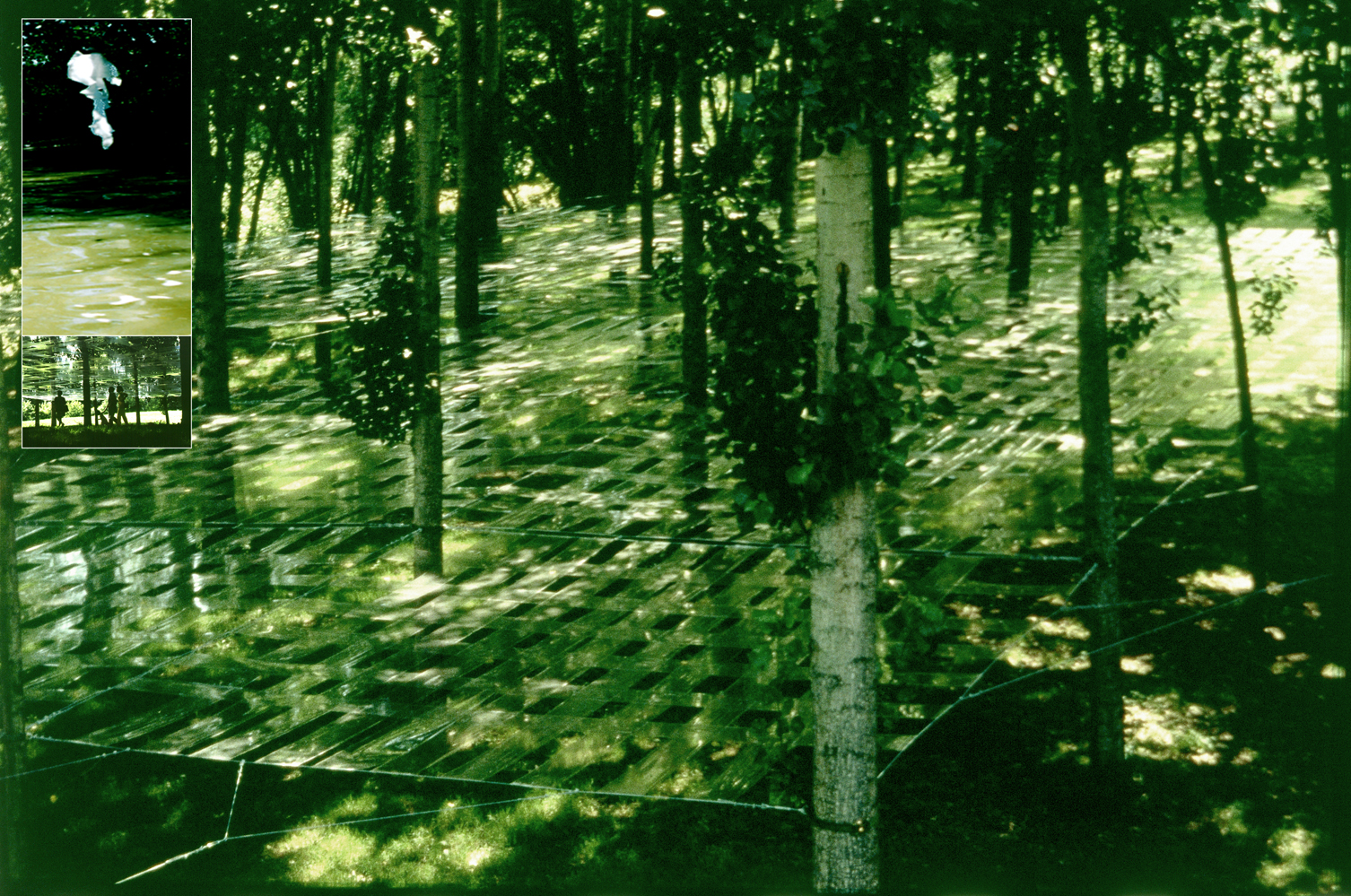
3. Sedimentation / 1996
FG: The challenge will be won by those cities that in the future will recognize new forms of territorial governance closer and closer to self-organization and dropped by strict contractual and closed paradigms (masochism). What is the role of the architect from this point of view?
FR: I refer you to Zizek (Zizek Slavaj) In the book “the specter still lurks. “The best way to realize this is to refer to the distinction between the fool and knave. The fool is a fool, a court jester, a small marquis, who are allowed to tell the truth precisely insofar as his speech is not to holder [performative]. ”
The fool is the one who tells the truth but has no lever for the transformation of society, no lever of power, and revels in this critical inactivity. “As for the rogue is a cynic who says openly truth, a crook trying to go to the dishonesty of honesty, a scoundrel who recognizes the need for reflection illegitimate to maintain the stability of the order social. The rogue is obviously the defender neoconservative free market, which rejects any form of cruelty social solidarity as a form of sentimentalism against productive, while the fool is the one who chooses a critical position from social perspectives , etc. radicaux.etc ”
An architect must now try to avoid both predictable attitudes.
Nor crazy idealism salon ,nor rogue, the cynical global …
The operative strategy “I’ve heard about” or “architecture of humors” is to develop political speculation with contemporary technologies, look closely another arrangement with programming, computation, transmission and capture of desire, materiality constructive procedure robotics, so with science as it is offered to us, if we can make arrangements to re-question the order of discourse and knowledge, but mainly the principle realities, physicality, whether living together ….
FG: In OLZWEG in 2006, you write:
“The machine is the vector, the vehicle, for a constructive subjectivisation.”
The approach eciologcal in this project reaches one of its most clear form: from the construction with waste materials to the theme of the labyrinth as a chance tore reintroduce uncertainty. what are the terms of this constructive subjectivation? What is the role of the machine in this dynamic?
FR: Olzweg”, in 2006, is a scenario to graft an un-finished, unachieved addition to a radical architecture museum in the pursuit of the endlessness of F.K. This smearing is done through the industrial glass recycling (mainly French wines bottles), re-positioned through a process of staggering, scattering and stacking by a 12 meter high machine. The random aggregation is a part of this unpredictable transformation, as a fuzzy logic of the vanishing point. The machine works to extend the museum, without clear anticipation, clear determinism and collect “voluntary prisoners” wrapped in the permanent entropy of the graft, testing the glass maze through its multiple uncertain trajectories, to loose themselves and rediscover this heterotopian non panoptical sensation of their youngness, using if necessary PDA on RFID to understand their positioning… at the opposite of an architecture that petrifies, historicizes, panopticalizes…
This is a strategy of subjectivation …. Understand the forces at attendance and return to their origin, without reducing, simplifying mechanisms. That we can get lost in a museum of architecture is a contingency policy, that it is dedicated to one thing in motion, becoming is an economic factor, adaptability, reformatting … but also keep intact the ability to surprise and curiosity as the cabinet of the same name, something that is revealed over time, with the arrow of time …
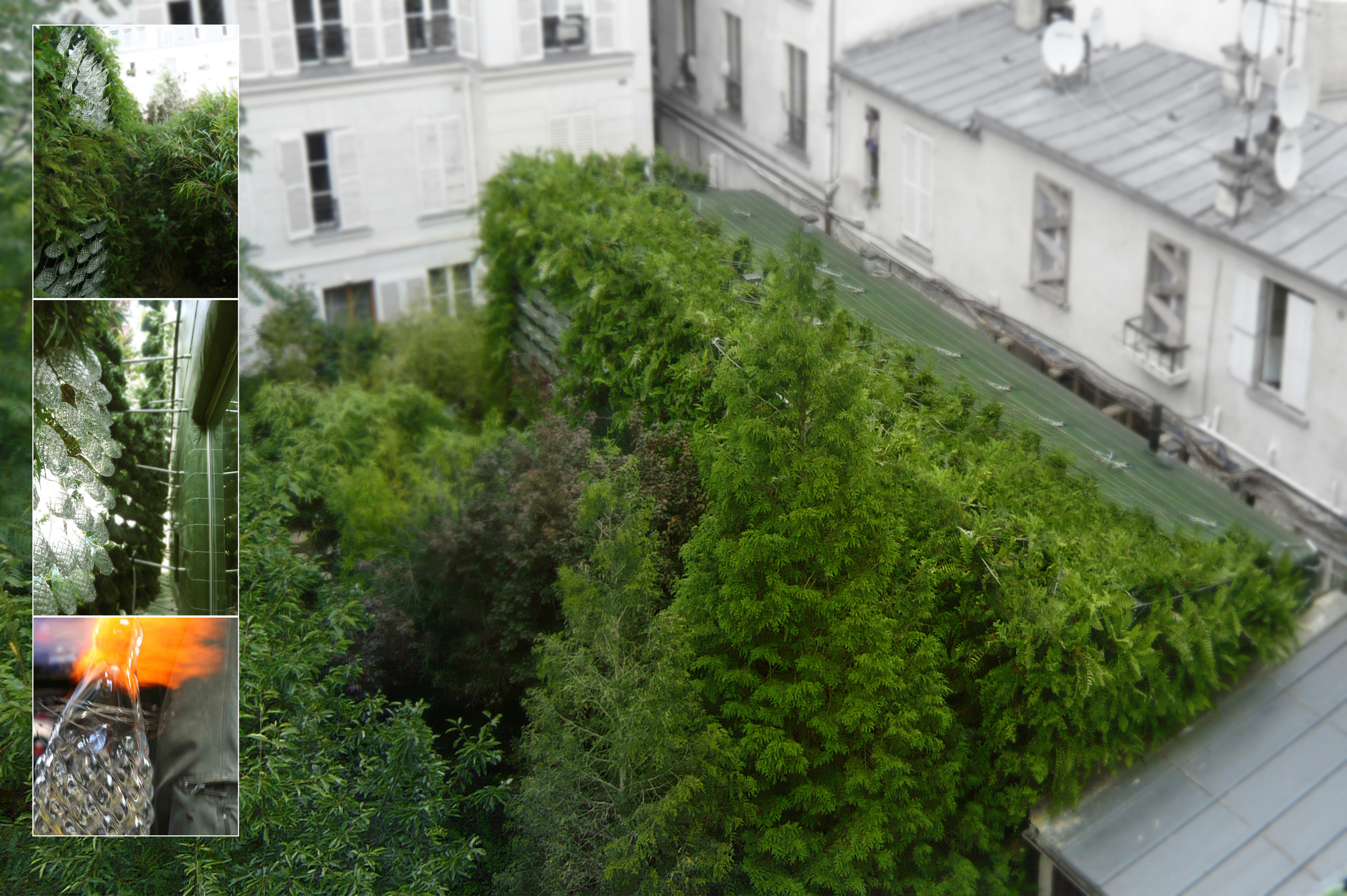
4. ImlostinParis / 2008
FG: In the “Alchimis(t/r/ick)-machines” you write:
“In a casual and basic sense, machines have always been associated with technicism and used as the extension of the hand, through its replacement or improvement by accelerating its speed and power to produce and transform. But it seems very naïve to reduce machines to this first, obvious layer of their objective dimensions, in a purely functional and “machinism” approach, exclusively limited to Cartesian productive power, located in the visible spectrum of appearance and facts. Because machines also simultaneously produce artifacts, assemblages, multiplicity and desires and infiltrate the “raison d’être” of our own body and mind in the relationship to our own biotopes .[2] Basically everywhere in nature, they are at the origin of all processes of exchange, transactions of substances, entropy and vitalism.[3] Machines are a paradigm for the body in the sense of its co-extensibility with nature, through processes, protocols, apparatuses, where transitory and transactional substances[4] constitute and affect simultaneously all species, their identities, their “objectivized and subjectivized” productions and their mutual relationships…”
“The blurriness between what they are supposed to do, as perfect alienated and domesticated creatures, and the anthropomorphic psychology we intentionally project on them, creates a spectrum of potentiality, both interpretative and productive, which is able to re-”scenarize’’ the operating processes. A mind machine simultaneously transforms the real and our perception of what we consider real. In this sense machines seem to be vectors of narratives, generators of rumors, and at the same time directly operational, with an accurate productive efficiency. These multiple disorders, this kind of schizophrenia, could be considered a tool for reopening processes and subjectivities, for re-”protocolizing’’ indeterminacy and uncertainties.”
They allow us to “exercise ourpower, to be conscious of our power, the consciousness of our power that is by the same token self-consciousness, consciousness of our vulnerability in the face of the enormity of this power.”[10](The exercise of our power as Nietzsche and Deleuze understood it, as a gift, a creation, and not the kind of dominance that they (the machines) could grant us.)
Making a small forcing we talk about biolougical aesthetic, how we can bring to an overcoming of masochistic positions in our society? More in depth seems to be a deep bond between masochistic and romantic positions, both have a desire for super sensual and sublime contemplation that somehow can misled by the reality of things, that’s why in 2050 speaks of de-romanticization?
Do not you think that in some ways biology and romanticism have some points in common?
FR: What are you talking about romance … this is his German origin, Werther and Affinity, in opposition to the Enlightenment, to go hand negotiate with the dark forces, is continuity French, nineteenth Victor Hugo figurehead, which makes it a theater porcupine, an odyssey of human misery in the format of a tale of chivalry, or is it the Parnassians, rediscovering me and his solitude, see its downfall as a transaction with another is that its ultimate, sublime, toxic via … Stéphane Mallarmé or transaction operates in an area that can not be mapped, which is not in the visible spectrum, the intelligible is what these continuities …. Rimbaud, Dada …

5. Hypnosis Room / 2006
FG: You speak of technology as a vector of subjectivity, your machine could become an element of novelty and uncertainty provide the necessary today. What are the terms of this insulation hipnosys-chamber? coincides with what Innerarity defines “totalintimacy” when he speaks of a tendency to introversion in the private and dissolution of boundaries between public and private?
FR: The hypno-chamber has been produced as an indoor or outdoor chamber, an immersion zone, where an hypnosis session has been registered and help you and me to escape from our alienated social condition.It’s a kind of Trans-door, through a hypnotic suggestion used during the “I’ve heard about” experiment.
We request Francois Roustang, hypnotist and psychoanalyst, a moment in the wake of Lacan J, then his argument with tutiferaires, heirs … Surpassing support us in this adventure, in this research … I leave you discover.
Please sit down, the chairs are comfortable… have a seat. There you go. The experience will begin shortly.
1. Disconnection/sensitivization phase, banal, casual speeches
Perhaps you’re a little nervous? These strange noises, the weird vapours… Let this feeling of unease take you over – it’s a natural reaction in the face of the unknown. Let’s slide slowly toward that unknown together now. I have to admit that even I was disturbed by what went on there, but at the same time, without understanding why, I had no doubt that there was something there, something that could be…. The adventure will be revealed only to those who are willing to risk embarking on it…
What are you supposed to do when you find yourself face to face with something unique? First of all, make yourself comfortable on the chair where we’re sitting. Do that now. Settle in. You’re feeling fine and my voice is easy to listen to. Perhaps you feel a certain tension somewhere in your body, a certain sense of discomfort. Don’t do anything special. Let your body take you away. Overall, your body is relaxed. Your body will take care of the part that’s still a little tense all by itself. Don’t try too hard to relax, but let your body readjust its position if need be all by itself… You don’t need to do anything at all – you don’t even need to try to not to try too hard. Let yourself by carried away by the soft light and the suspension of time. You don’t even need to pay attention to what I’m going to say. You’re just going to feel yourself getting heavier, heavy in your chair. And now you feel yourself filling up, swelling until you take up the whole chair. But don’t think about it. Let your mind go where it wants to without worrying about it. You feel heavy, but at the same time you feel light. There’s nothing you need to do – just let it happen. You don’t need to notice what’s going on. Just let yourself drift away. That’s a good way to get ready, to open your mind to a different way of seeing things. Without even realizing it, you’re going to open your mind more and more to the uniqueness you’ve already perceived… You don’t have to do anything at all, but if you want you can feel how your back is resting comfortably against the back of the chair, or that your arms are resting on the chair, that your hands are open just like you open your arms and your hands to someone, to something, to something that happens. You’re not trying at all to open anything; you’re just letting that opening up happen whenever and however it wants. Your feet are resting comfortably on the floor….
2. Reciprocal modification phase (non included speak in the cession),slow speeches
Now you feel solid, you feel at ease, you’re ready to face new things. But first we’re going to do a little exercise. Close your eyes and you’re at home. You’re in your bedroom or your living room, if there is one, you’re going up and down the stairs of your house or maybe walking through the yard, if there is one. You’re breathing in the air of your home, you’re letting that atmosphere fill you up, you feel more comfortable, or maybe less comfortable. You realize that you’ve been transformed by this environment, but on the other hand you can become an actor on this stage as well. A few minutes ago maybe you felt oppressed by the disorder of your home, or just the opposite, by the slightly too rigid order prevailing there. Without thinking about it, let yourself change a few things or move the furniture and other objects around, so that your environment goes along better with what you are or what you want to be. Let the environment fill you up by osmosis; you’ve let your environment act on you and you’ve acted on it. You’re inseparable from it…

6. An architecture des humeurs / 2011
3. Travelling zone, very slow and deep speeches
Let yourself go further, let yourself be infused by the sensations it brings you and discover a wealth of details you’ve never noticed before, that you never even suspected. Through the open window the city coming into view is a body, an intertwined, tangled, knotted body… Its curves are like those of a forest with twisted branches and diffused light. The woods guide you, you feel both afraid and protected, childlike and grown-up, this city is an extension of your own body, of your arteries, of your blood, of your genitals, of your throbbing body. You are one thing in that ensemble, one element coalescing into the whole, something porous with its own respiration and that aspires to be its own environment…
You are one of the nerve endings of this body that is a city, you are at the centre where it all interconnects, of a multitude of pulses, and you feel the energy, the substance, you feel the growth of this body that is a city like an extension of your own corporality.
No one can make you accept a form that didn’t feel right to you first, and no authority can take it from you. No morality can be dictated from on high….
You are this body that is a city and you feel it growing….
Mixtures of ugliness and beauty, of obstacle and possibilities, of waste materials and efflorescence, of threats and protection, of technological power and the forces of nature, this body unfolds before your eyes and it is your dwelling place…
Here everything comes together in a knot. It’s all there, in the process of becoming, a never-ending movement….
Let yourself go. Don’t think. Just let yourself glide into this silky, strange sensation that scares you and caresses you…
That scares you and caresses you…
4. Void and Silence 1 mn
5. Session closing, waking up speeches, with tenderness
Now you can let your eyes open again. Take your time. You can easily forget everything that’s happened and even this chair. There might be something different now, but there’s nothing to worry about. Gather your thoughts and get ready to stand up whenever you feel ready. If you feel slightly dizzy, just wait a minute until space and time come back to you…
The session is over now. I won’t show you out, you know the way…
When he speaks about himself Roche calls “a romantic, naive and disillusioned, jaded and childlike that walks happily on the junk of the twentieth century, in a comatose state, in a sensual suffering, production and operational distress … and distrust of those who bring their moral or knowledge over the shoulder, are many, many, like criminals … “. Invebitabile to note that his speech transpire a mind highly resistance, stable where the desire of a resilient self, capable of communicate and negotiate with the world, trought expansion and contraction … each starting basically is already an arrival, each port is already a path … you just have to explore, the rebirth is just around the corner.
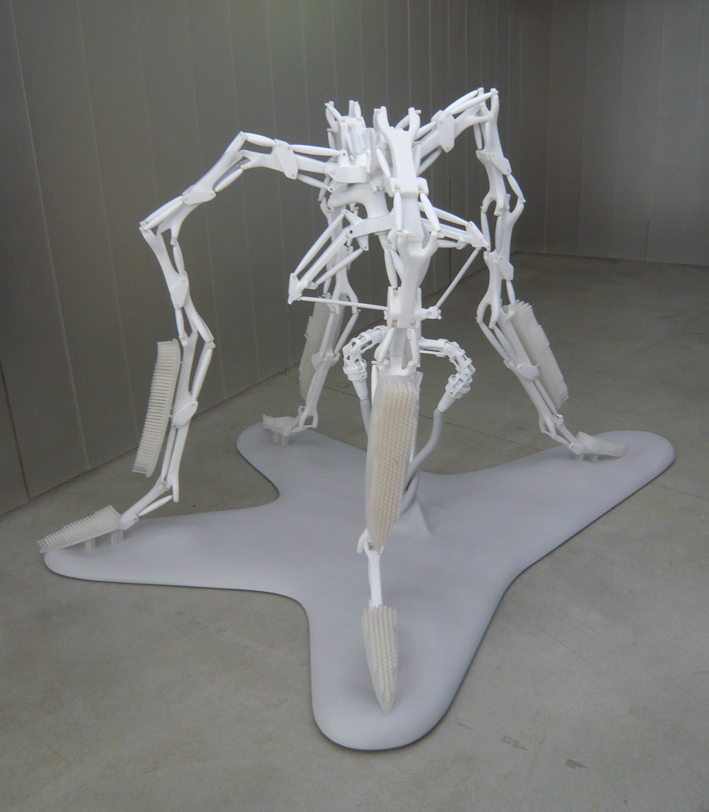
7. An architecture des humeurs, Robotic / 2011
FG: In the same “cold and cruel” in 1968, Deleuze seems to have placed a small piece about the theme of freedom, implicit in the book and it seems to resolve into “the fold”.In the fractal aesthetics of the “fold into the fold” Deleuze finds hope for a conscious living of a soul connected strictly to the body that can extend in this way ” his clear region”.
In your work frequent is reference to Deleuze, the fold, what do you believe there is still to be discovered on the aesthetic front of that thought pattern?
FR: The paperless studio in the 90 ties was entirely dedicated to the Fold…I was more interested in “Milles Plateaux”, “Anti Oedipe”, “Cold and Cruel”… and the “abecedaries”, where strategies of resistance (coming mainly from the pair Guattari-Deleuze) was in concomitance with the philosophy of the being, at the opposite of the structuralism philosophy.
So my scenarios have a few things to do with the nth plateau of their roots, but also the mechanisms of power and knowledge (yet) that underlie … the “fold” has enabled a transformation tools, methods of manufacture, instrumental thoughts … but it is not enough … I refer you to my first answer …
FG: One of the greatest truisms about technology is that we often forget that there are people behind it. It’s interesting the strong link that exists between people in your projects and technologies, and the need to find the narrative dimension show through a strong instinct. How important is for you the instinct to produce ideas and architecture?
FR: Architecture need to become the by-product of a scenario, embracing more than its own ability to create a flagship…A good movie is driven by a writing… we are missing dramatically the point in Architecture…specifically when, as Antonio Negri wrote :
“The great industrial and financial powers produced not only commodities, but also subjectivities” Toni Negri, Empire, Harvard University 2000
We need to infiltrate, transform, corrupt this machine which using ecology, social meeting, security, media as a subjective instrumentation to abuse and alienate…
As I said, as the proletarian worker of the city factory…we just need to re-contractualize the condition of our servitude… in the pursuit of Sacher-Mazoch…
Invebitabile to note that his speech transpire a mind highly resistance, stable in the desire of a resilient self, capable to communicate and negotiate with the world, through expansion and contraction … each start is basically an arrival, each port is already a path … you just have to explore, rebirth is just around the corner.
Info:
Info:
Title: The Elastic Self | Roche | the whole version!
Time: 24 ottobre 2012
Category: Article
Views: 4729 Likes: 0
Tags: -

